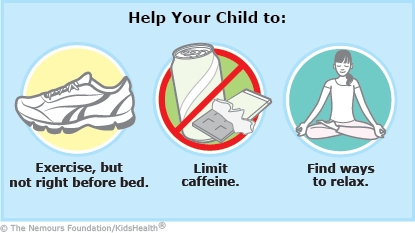Someone with restless legs syndrome (RLS) has a strong urge to move the legs and an uncomfortable feeling in the legs (such as tingling, itching, crawling, or burning). Moving the legs brings some relief. Symptoms are usually worse in the evening and at night, so it can be hard to fall asleep or stay asleep.
Making changes in everyday activities can sometimes help with restless legs syndrome. Low iron in the blood (iron-deficiency anemia) may play a role in RLS, so if your child's iron is low, the health care provider will prescribe iron supplements.


Follow your health care provider's advice for:
To help when your child has symptoms, they can try:
Not getting enough sleep can make symptoms worse. Kids who are 5–10 years old need about 10–11 hours a night and older kids and teens need about 9 hours a night. To get the sleep they need, help your child:
To lessen symptoms, encourage your child to:

Your child:

What causes restless legs syndrome? The cause isn't clear. It may be related to low iron in the body and/or brain chemicals. It can run in families.
How does restless legs syndrome affect someone? The bothersome leg symptoms can make it hard to get enough sleep. Kids who don't get enough sleep may be cranky, stressed, have trouble concentrating, and act out.